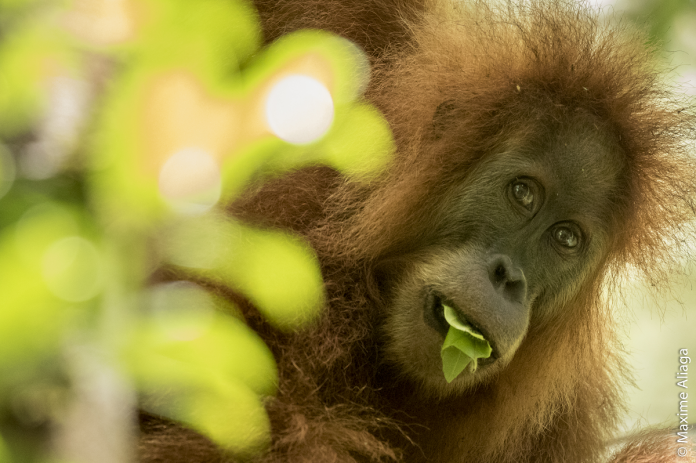
A team of researchers from the University of Zurich and Liverpool John Moores University in the U.K. announced the discovery of a new great ape species, the Tapanuli orangutan in the journal Current Biology last Thursday. The new species is facing extinction though, and it might happen in our lifetime.
Scientists hedged the discovery announcement and emphasized with great urgency the need to preserve the Tapanuli orangutan’s habitat, which is located in three isolated yet nearby districts of Tapanuli in North Sumatra, Indonesia.
Pongo tapanuliensis is the first species of great ape discovered in almost a hundred years. It joins seven other species, although humans technically make up the eighth. There is an ongoing debate in the scientific community over whether or not we count as a separate species or if genes do, in fact, make us great apes too.
UZH anthropologists discover 3rd species of Orangutan. The Tapanuli Orangutan is the 7th great ape species. https://t.co/5fCxA5eqp9 pic.twitter.com/x0sF9qpGuF
— University of Zurich (@uzh_news_en) November 2, 2017
How are Tapanuli orangutans different from others?
Since 1997, animal researchers established in the Batang Toru region of North Sumatra had seen the species identified now as Pongo tapanuliensis, but misidentified it mostly as the smaller of the two existing species already in the record: Pongo pygmeaeus.
However, it was not until 2013 that the research teams posted there had access to the skeleton of a male orangutan killed in the area. When compared to skeletal material from other species, there were some remarkable differences that served as early evidence to prove that this was, in fact, a new animal.
Morphological differences at a skeletal level include, most notably, a smaller size of the skull in contrast to the other two species. Fizzier hair is also one of the phenotypical characteristics that also distinguish the Tapanuli orangutan from its cousins.
Scientists urge Indonesia to protect Tapanuli orangutans
As scientists found early but conclusive signs that they were dealing with a new species in the forests of North Sumatra, Indonesia, they also found a deeply troubling issue with the existing animal community: there were less than 1000 of them, and a fragmented distribution made them extremely vulnerable.
After officially recognizing Pongo tapanuliensis as a new species, scientists called for the attention of the Indonesian government to immediately protect the threatened environment where these great apes live.
Earlier this week, they described how the Tapanuli orangutan population lives spread across three fragmented districts of Tapanuli, North Sumatra, and how it is of the utmost necessity to build natural forest corridors that interconnect these areas so as to ensure their survival.
In 2015, the Indonesian government claimed the whole of the Batang Toru region was deemed a protected area. However, researchers and the press say there are still some projects under development in the region, and that they threaten the security of the new species, which is also now the most endangered ape species in the world.
Source: Current Biology











